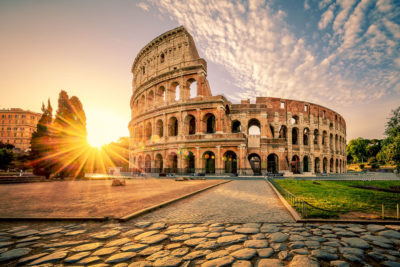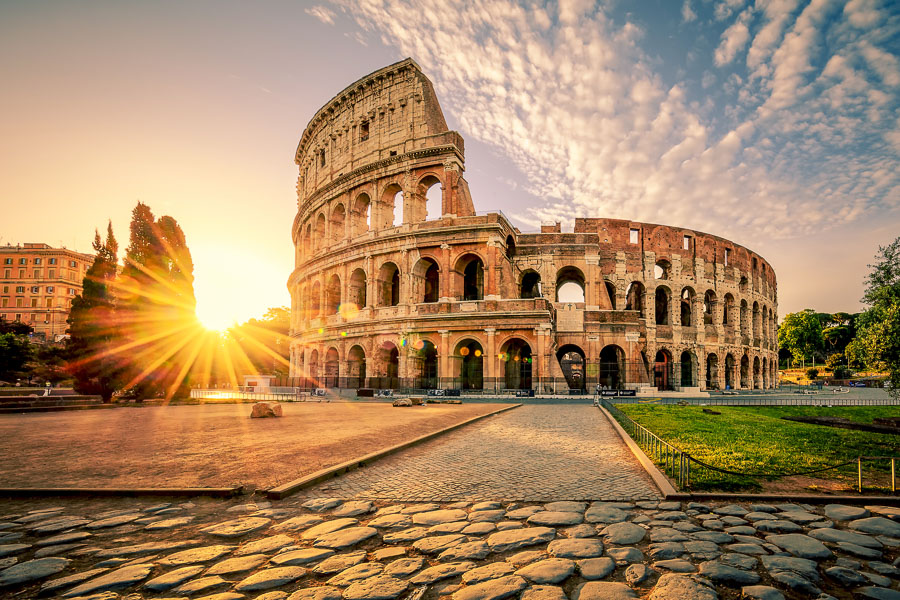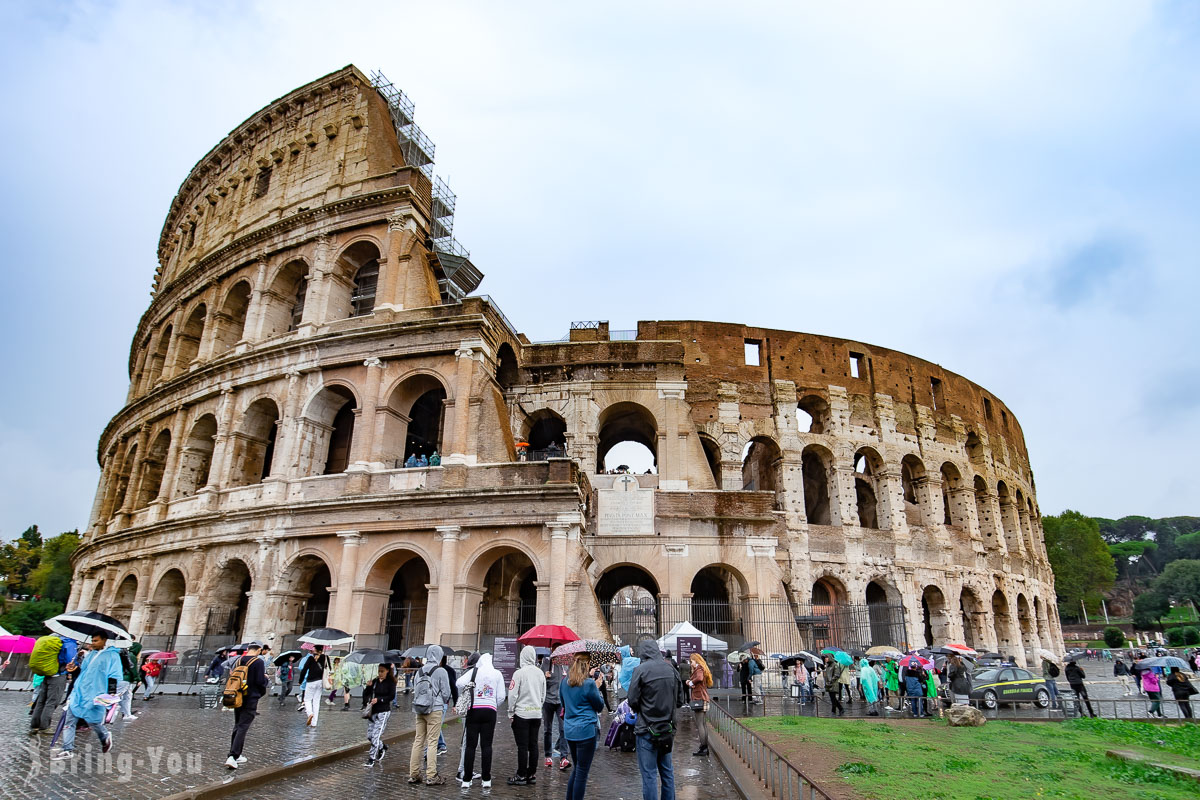
The Rome Colosseum, officially known as the Colosseum or the Flavian Amphitheatre, has been going strong since AD 80. Serving as the central event hub where gladiator contests, animal hunts, and mock sea battles took place, the Colosseum was a symbolic icon left behind by the Roman Emperor Vespasian as his biggest shout-out to the rest of Europe that Roman engineering and architecture were second to none.
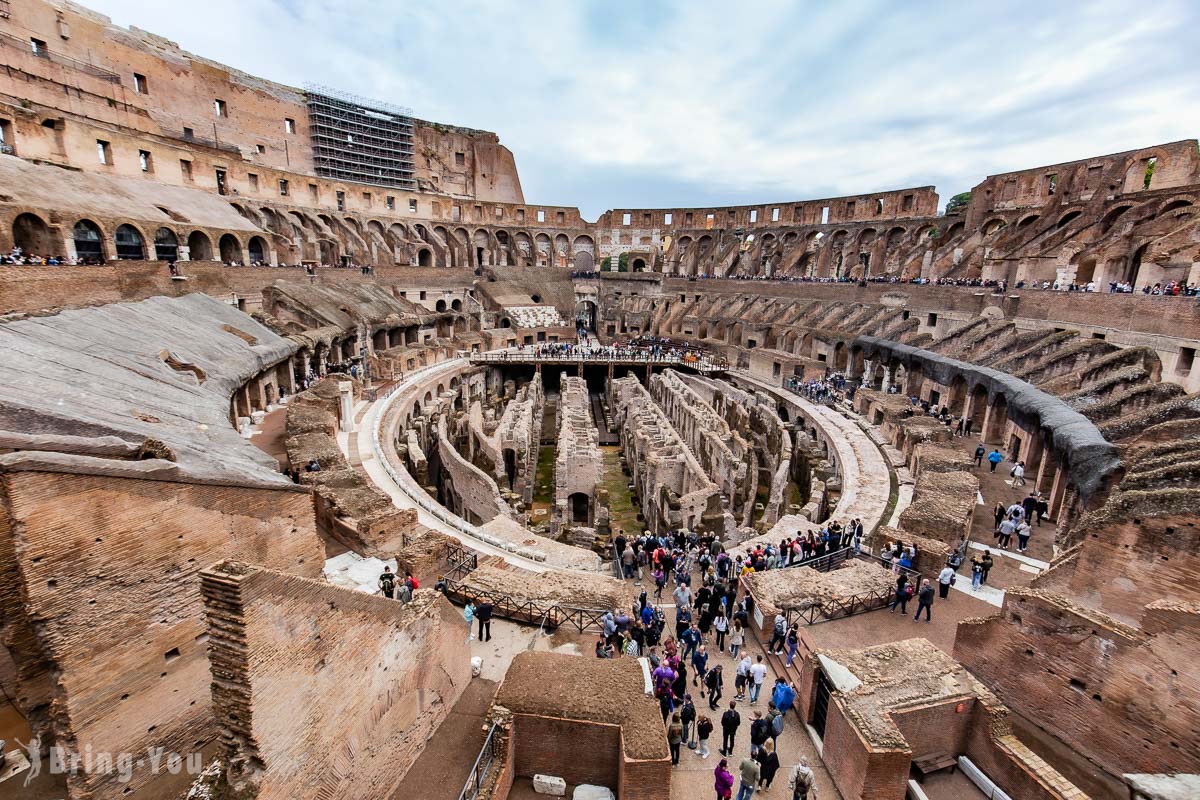
Once attracting up to 80,000 people during the biggest contest of the country, the Colosseum today is recognized as a UNESCO World Heritage Site, drawing historians, ardent travelers, and passionate photographers to witness this impressive, expansive building on a daily basis.
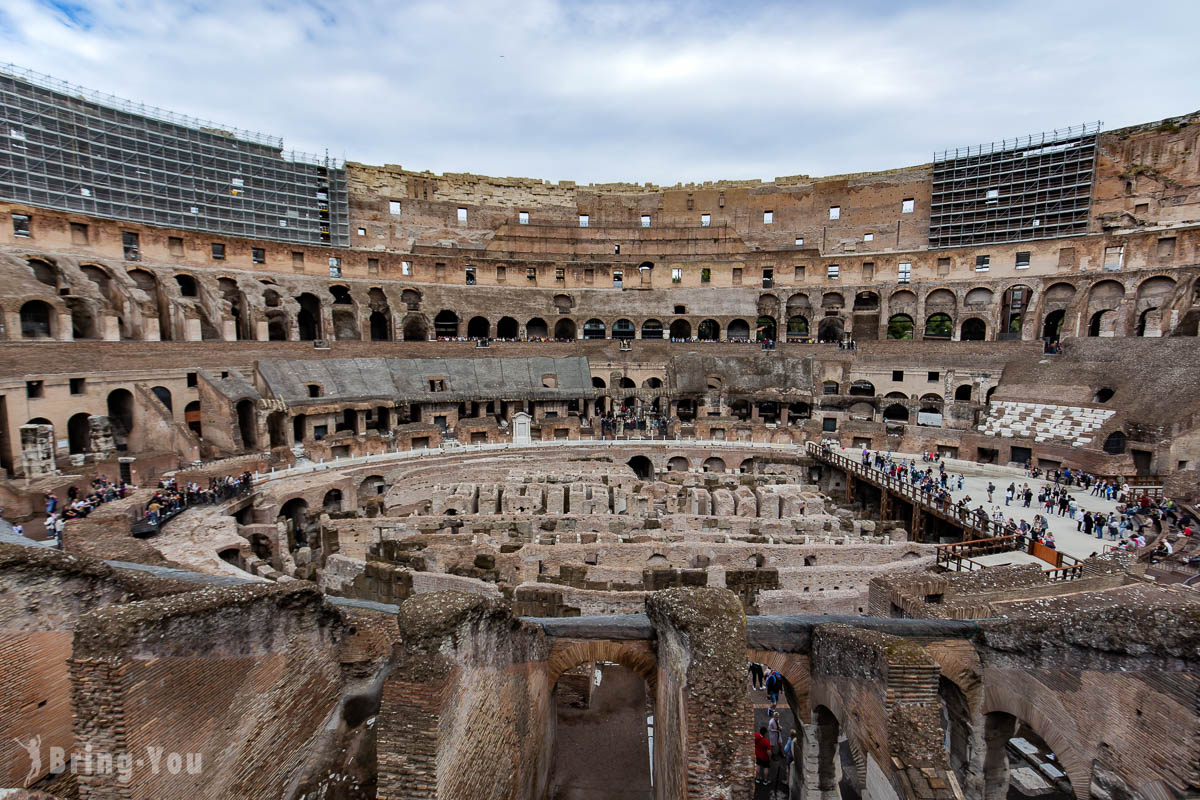
This vast arena was not complete until eight years after the first stone was laid on the ground. Even after 2000 years, how these huge boulders were put together using technology at the time remains an everlasting myth to the world. Until now, the Colosseum has undergone several restorations, including the underground backstage of the ancient Roman amphitheater.
How Many Levels Does The Colosseum Have?
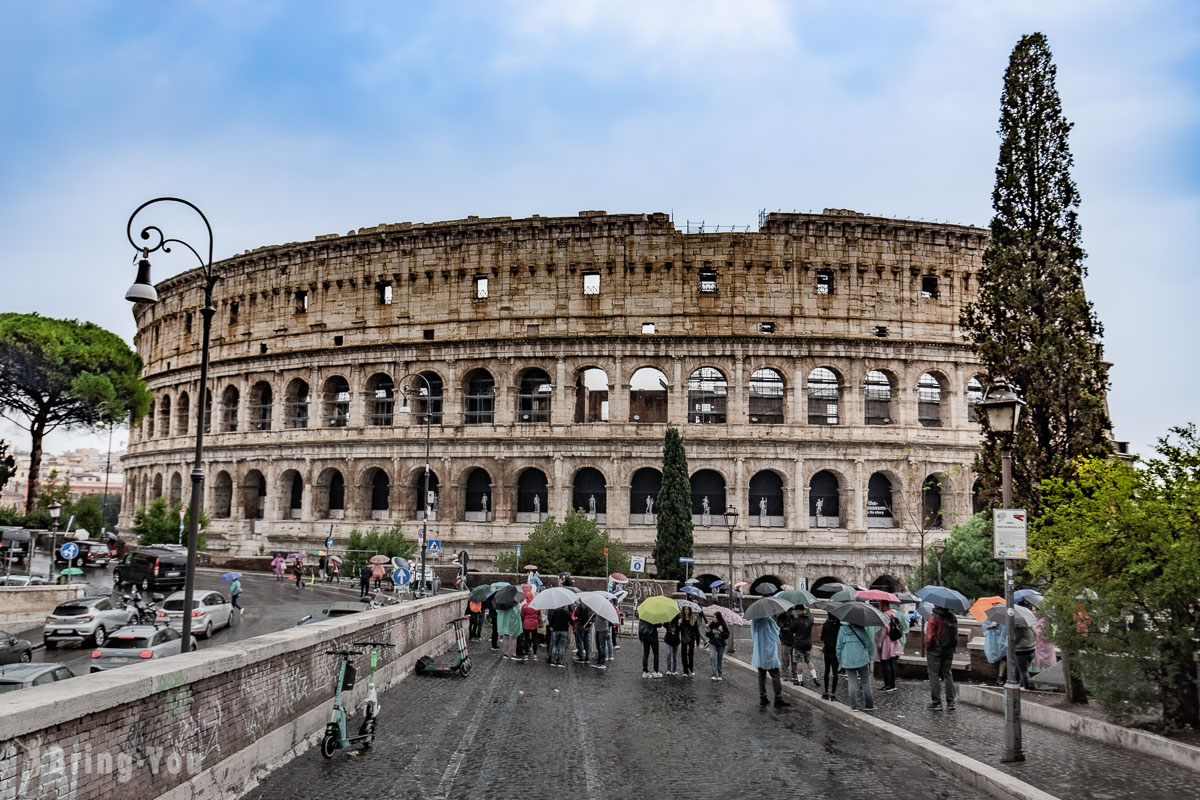
The Colosseum boasts five dramatic floors, including the ancient arena floor (which is made out of wood and a layer of sand to absorb blood stains from the battles) and the underground basement.
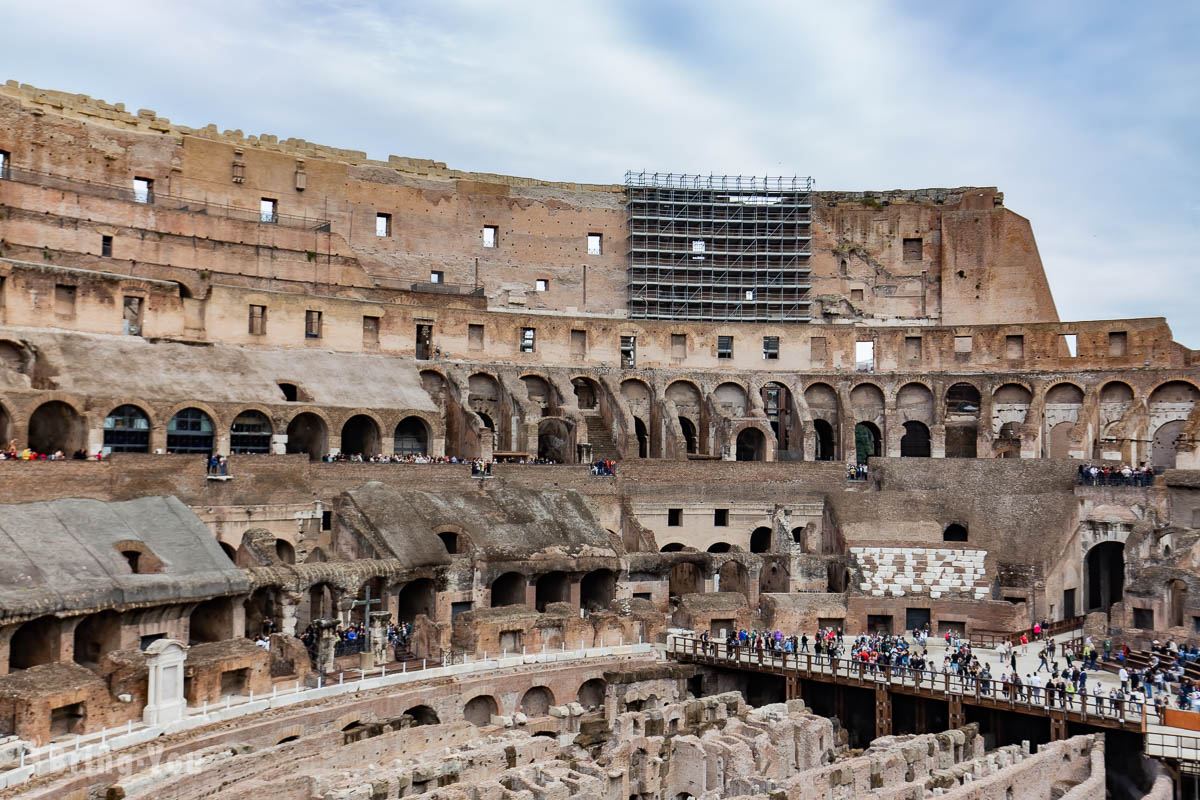
Knowing which floor you wanna visit will come in handy as it affects the type of ticket you need to purchase. Here is a brief breakdown of all the floors at the Colosseum:
- Arena floor: This is where the contests and battles took place.
- Level 1: is the closest level to the central arena floor. This one was used for higher-ranking officials such as emperors, knights, and priests.
- Level 2: for the nobles.
- Level 3: for the wealthy social classes.
- Level 4: for ordinary residents.
- Level 5: for women from the lowest social class.
- The Hypogeum: is the underground area where fighters and animals used to get ready before the fight.
Understanding The Different Colosseum Tickets
There are four types of tickets to choose from:
The Standard ticket grants fast-track entrance to Levels 1 and 2, as well as a visit to the Roman Forum & Palatine Hill which are five minutes away on foot.
Validation: 24 hours.
Tickets are available for purchase at 18:30 on the first Tuesday of each month.
The Full Experience + Arena ticket includes all benefits of the Standard type plus access to Levels 3, 4, 5, and the Arena Floor.
Validation: 48 hours.
Tickets are available for purchase at 18:30 on the first Thursday of each month.
The Full Experience + Underground ticket tops up the Full Experience + Arena type with the Hypogeum.
Validation: 48 hours.
This type of ticket is also the most popular and the hardest to obtain. Plus, the Hypogeum access must be accompanied by a guide.
The Full Experience + Arena/Underground types are also valid for visitors on a guided tour.
Reminder:
Summer is the peak season, which means tickets are sold out fast as only 3,000 visitors are granted access at once. For that reason, avoid buying tickets in person on the site as queue times of at least one to two hours will drive you insane
Online tickets are better options even though it’s a tad more expensive (about EUR 2).
Entrance to the Colosseum is FREE OF CHARGE (only applied to Standard tickets) on the first Sunday of each month but tickets are still required.
Plan your itinerary in Rome wisely and make sure everything is fixed before buying your tickets to the Colosseum. The best time to buy Colosseum tickets is at least one month in advance to avoid it being sold out.
Levels 1 and 2 are always open. However, level 3 is still under construction as of 2023. Make sure to double-check the opening status of each floor if you opt for non-guided tickets.
Should You Join A Guide Tour To The Colosseum?
Heck yeah! Unless you only wanna snag away some shots and flee the scene. I strongly recommend choosing the best-guided tour you like so you can understand what’s going on here 2000 years ago with complete insight.
Plus, these travel operators also come in handy if you wanna book your visit way long in advance or even last minute.
There are tons of organized trips out there to choose from, which means picking the right one that’s just enough to cover everything you wanna see is a daunting task.
My favorite option to recommend is the All-In package which grants you special access to the arena floor and the underground tunnels. This one apparently comes with a skip-the-line entrance as well as visits to the nearby Roman Forum & Palatine Hill.
Guided tours to the Colosseum are not available over the counter and must be booked online in advance via a travel operator.
Should You Buy A Roma Pass?
Yes if you plan to cover many different attractions and use public transport a lot during your stay – and No if you only plan to visit one or two sites on a brief stay in Rome.
The purpose of the Roma Pass is to keep the cost down and provide you with quick and easy admission with their skip-the-line or fast-track benefits.
The Roma Pass is available in either 48 or 72 hours.
Insightful Tips For First-Time Visitors To The Colosseum
- Outside food, alcoholic beverages, glass bottles, selfie sticks, laser pointers, large backpacks, and suitcases are not allowed.
- Bring plenty of water.
- Wear comfortable walking shoes.
- Get your sunscreen ready to avoid sunburn during summer.
All About The Entrances To The Colosseum
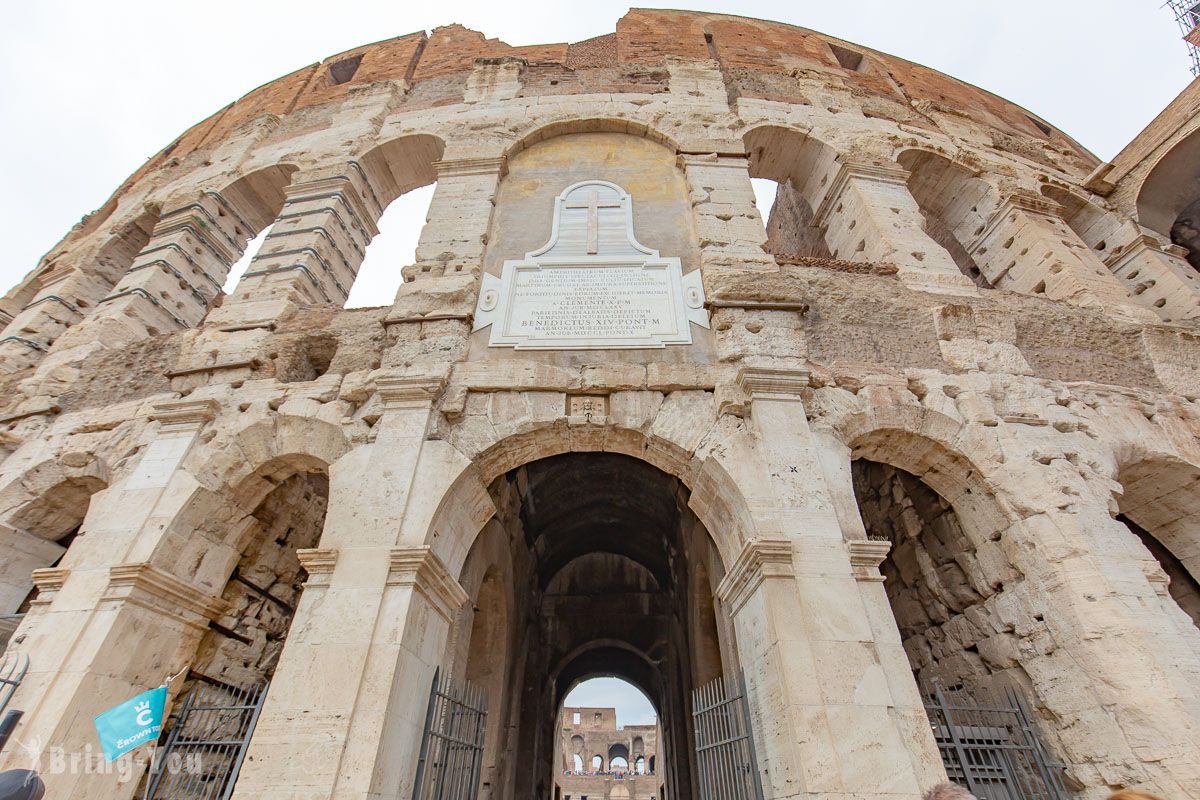
There are three entrances to the Colosseum. Upon your ticket purchase, you will be informed of the accurate entrance.
The standard ticket holder will enter via the Individual Entrance.
Tour groups enter via the Group Entrance.
The Full Experience + Arena/Underground ticket holders will enter via the Arena Entrance.
What To See Inside The Colosseum?
Of Course – The Arena Floor
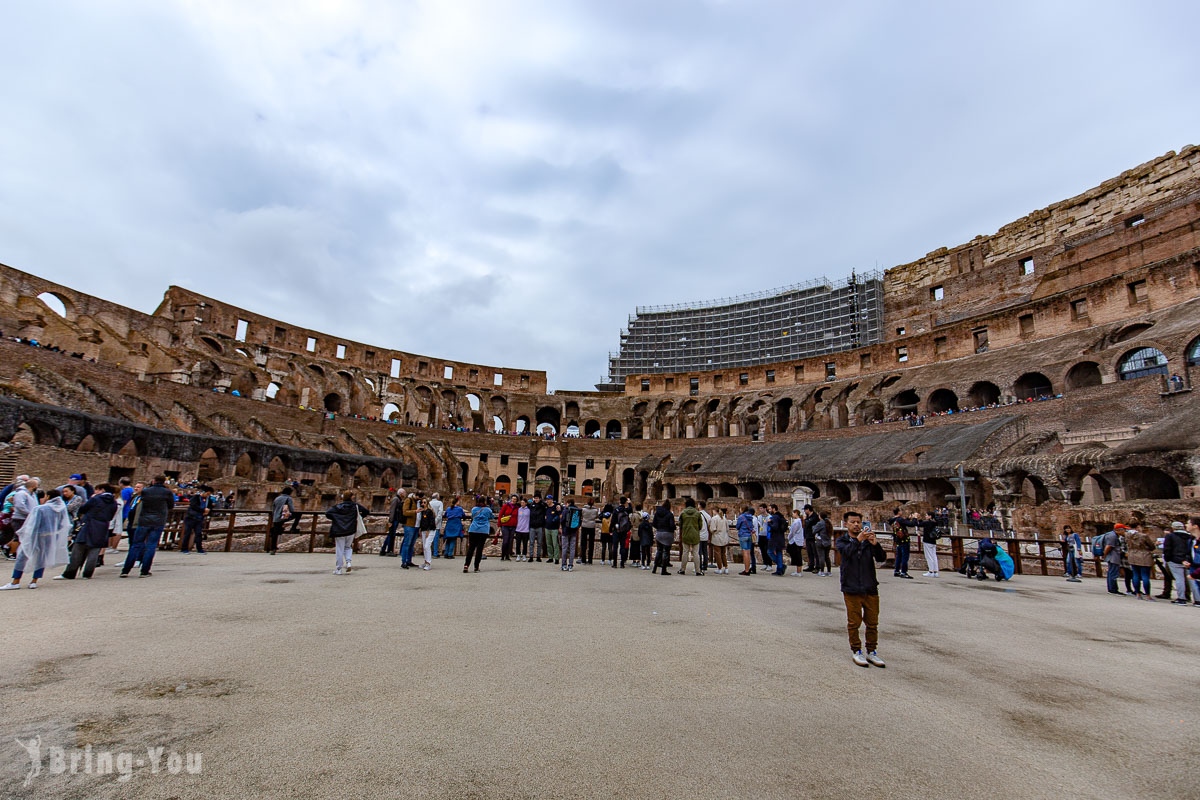
The central stage demands special access for a reason. Undoubtedly the biggest hook of the whole stadium, the arena floor is strongly supported by a system of stone tunnels to keep a hold of the wood framework placed underneath the floor.
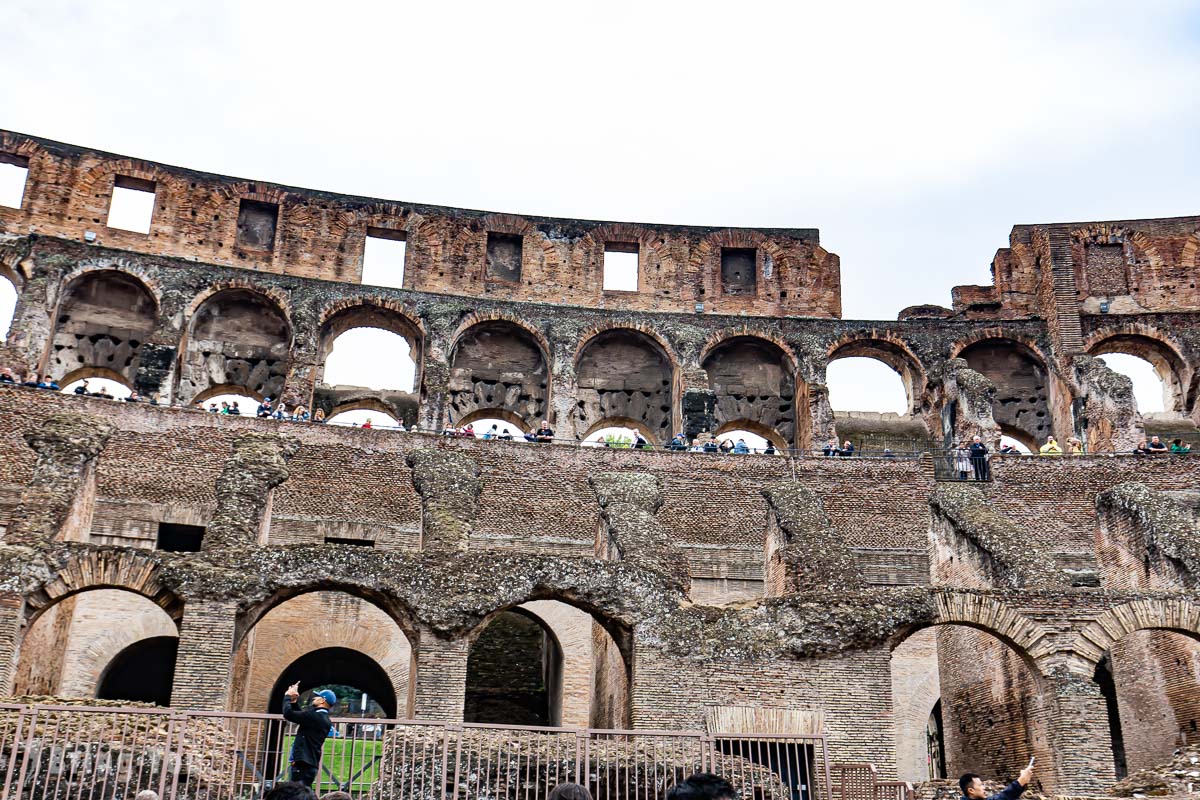
The circular “fighting stage” is wrapped around by 36 trap doors where unimaginable hellish things and animals were kept hostage before being released to attack the fighters.
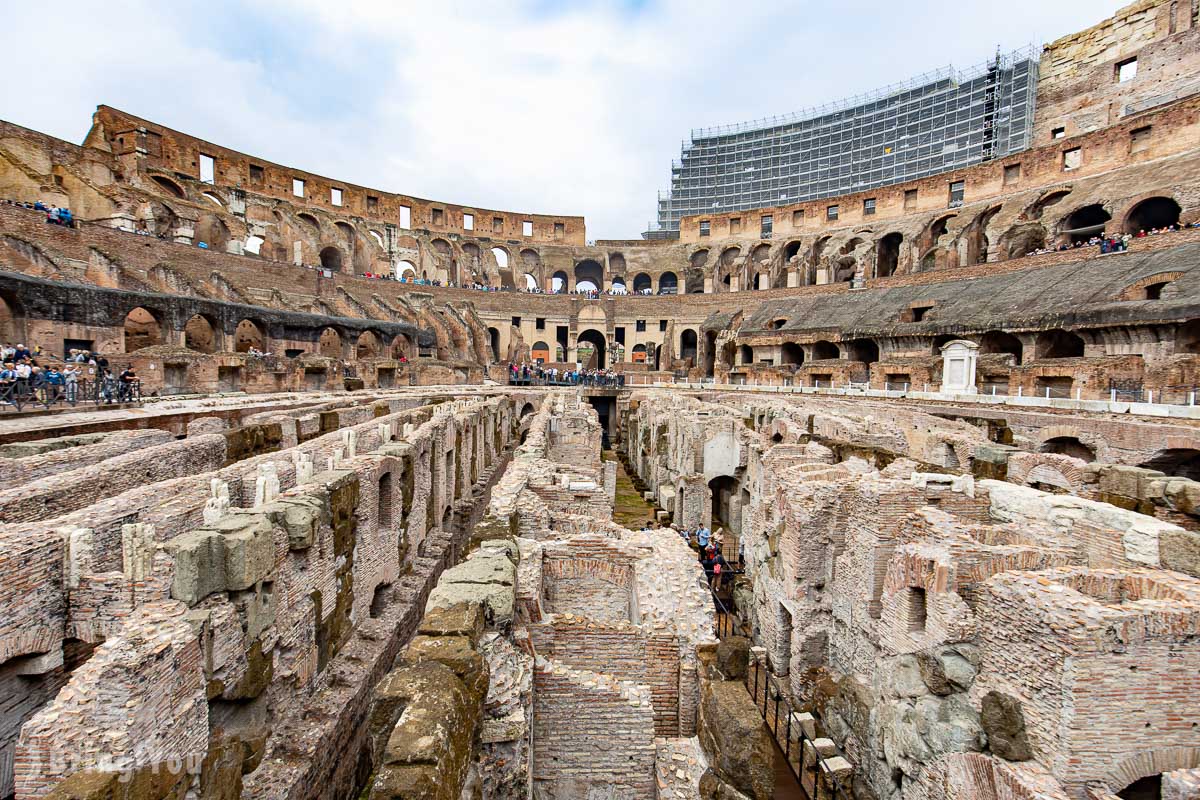
Ironically, these “brave” fighters were indeed prisoners or slaves. They were forced to come to the stage for a bloody fight that they never really wanted to be there in the first place.
On the west side of the floor, they placed the Gate of Victory through which the last standing men made an exit. Meanwhile, the east is placed with the Gate of Death where, of course, the bodies of those who lost the battle were dragged out.
The Hypogeum
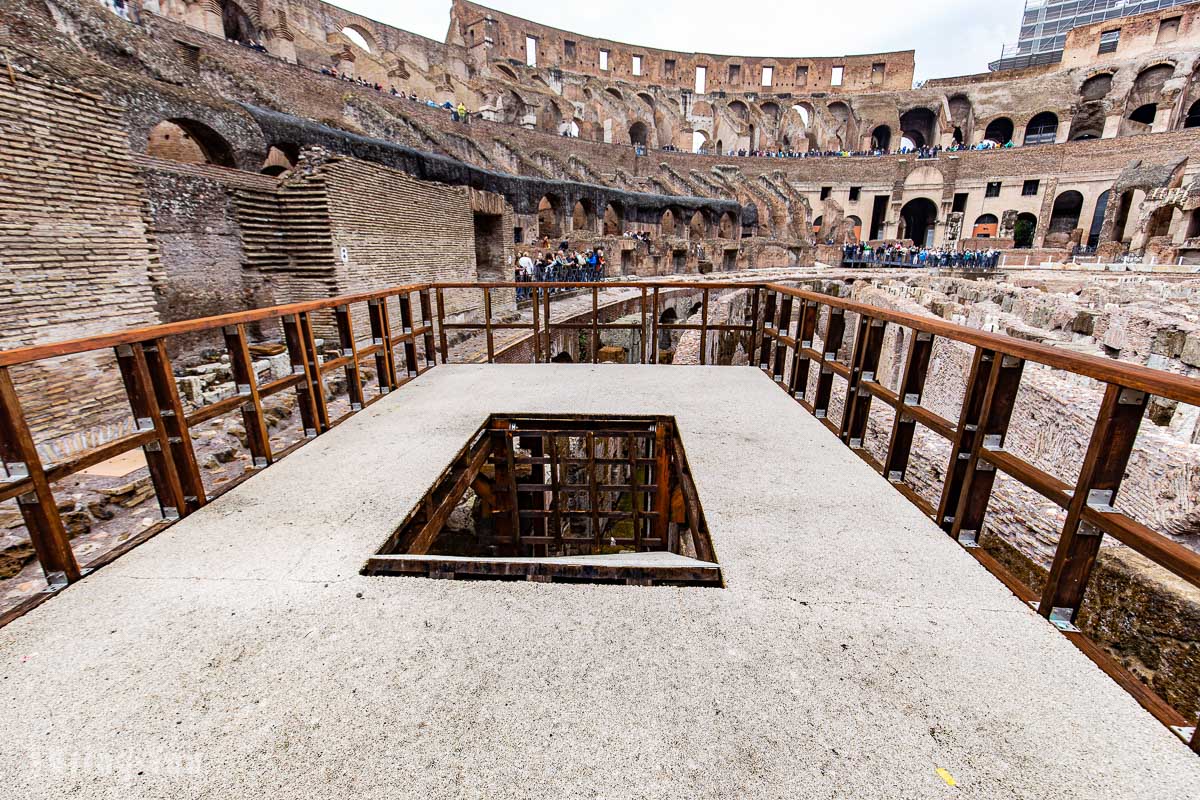
Right below the stage is the underground chamber, made of a complex labyrinth where event hosts and fighters stayed. One of the coolest things ever established in the basement is the metal lift used to bring fighters to the stage.
The Level 2
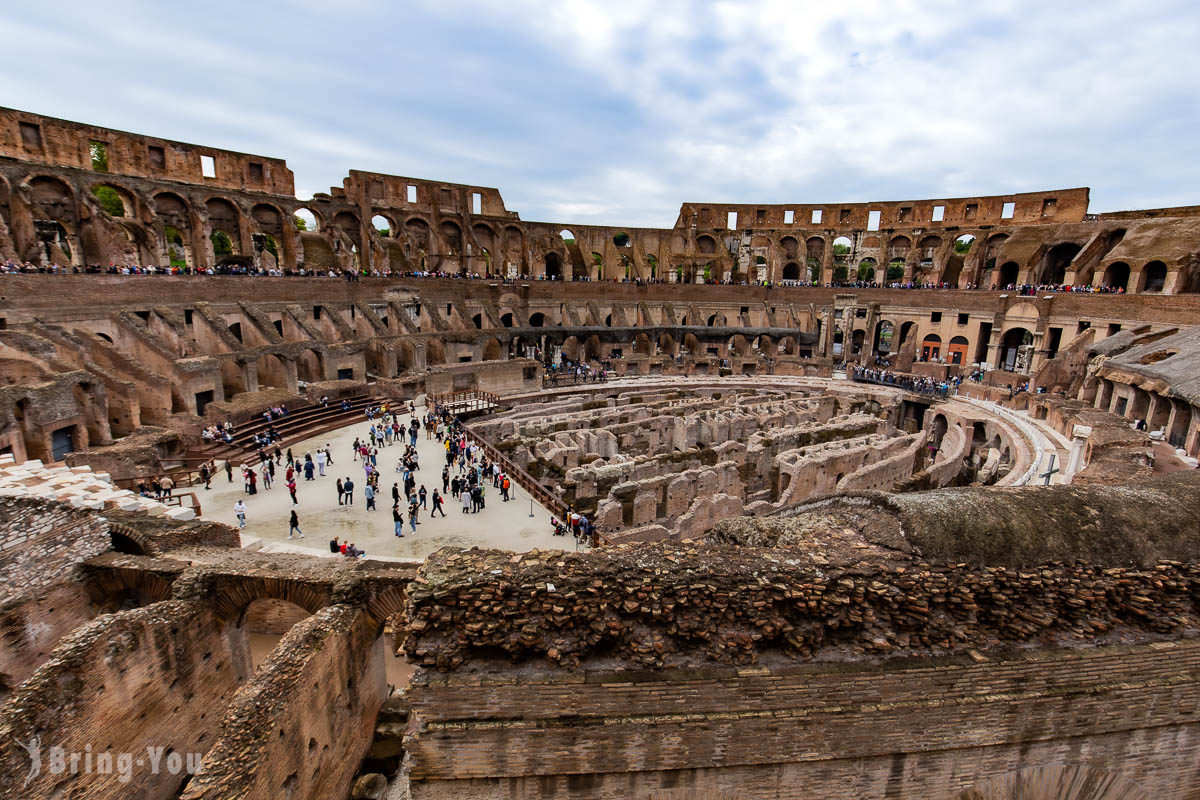
On the second level, look to the balcony for the best view of the whole arena. On the right side, you’ll find some of the original seats that are reconstructed. The second floor served equities and knights. This is where they set up 80 arched entrances and exits. 76 of these gates are coded to help the audience navigate and find their seats. Thanks to this handy coding system, no congestion ever happened at the entrances or exits even with such a large number of audiences coming all at once.
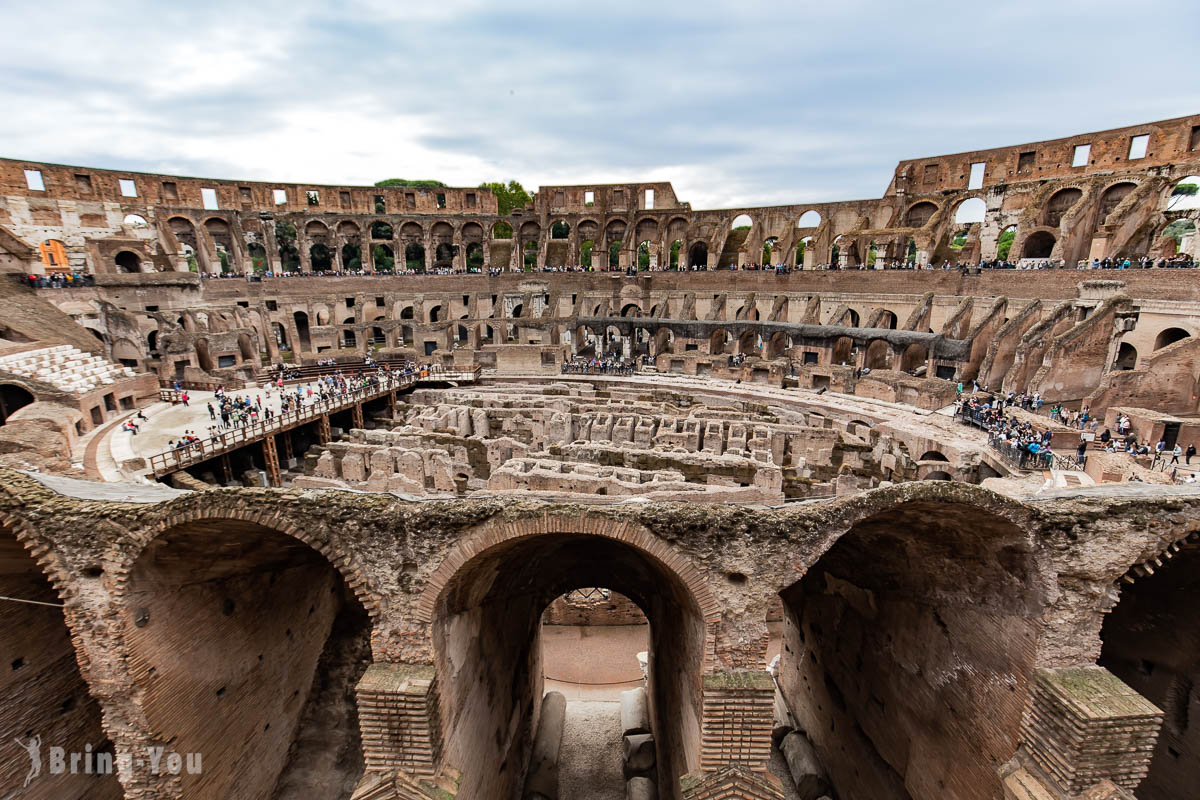
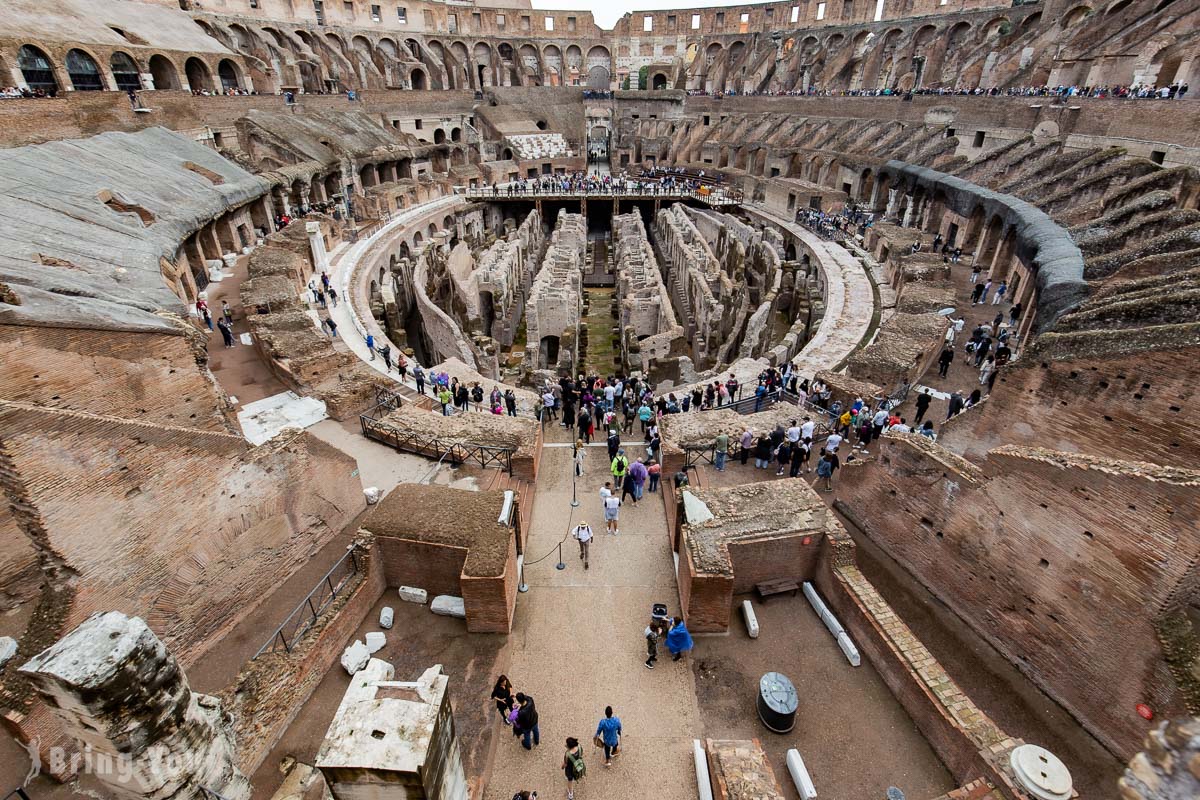
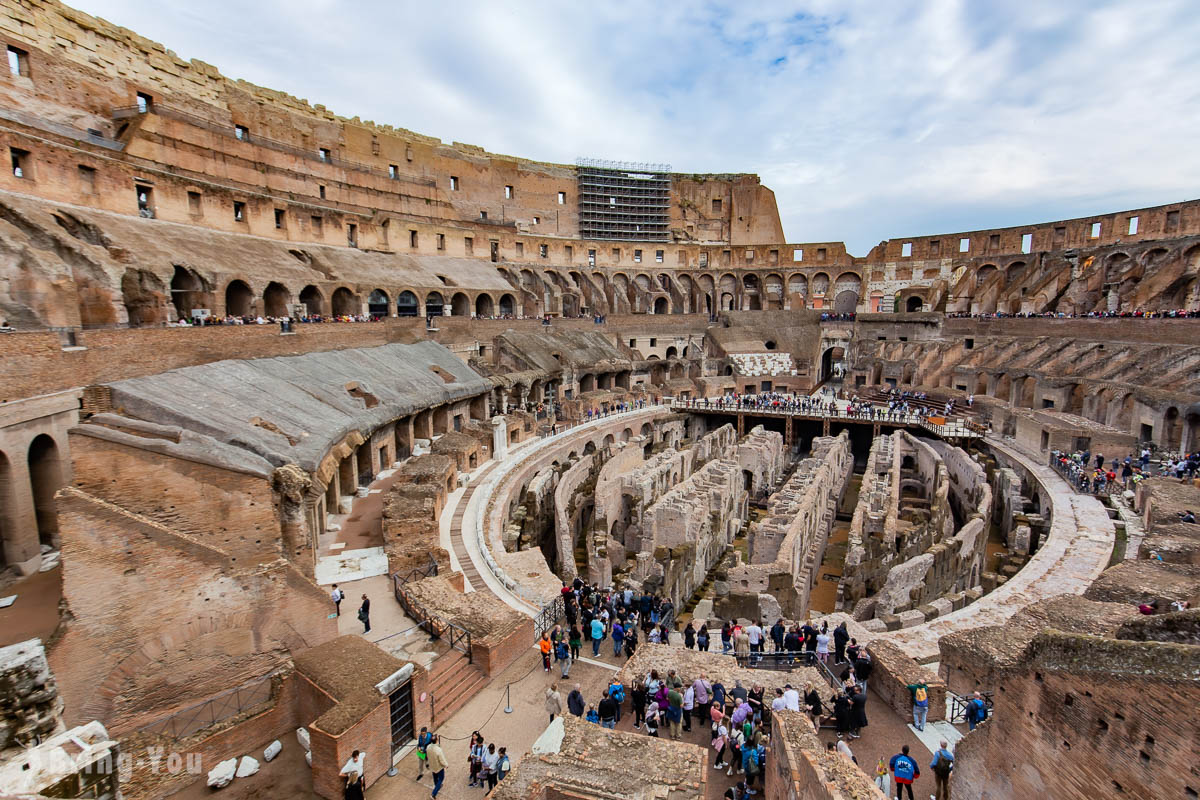
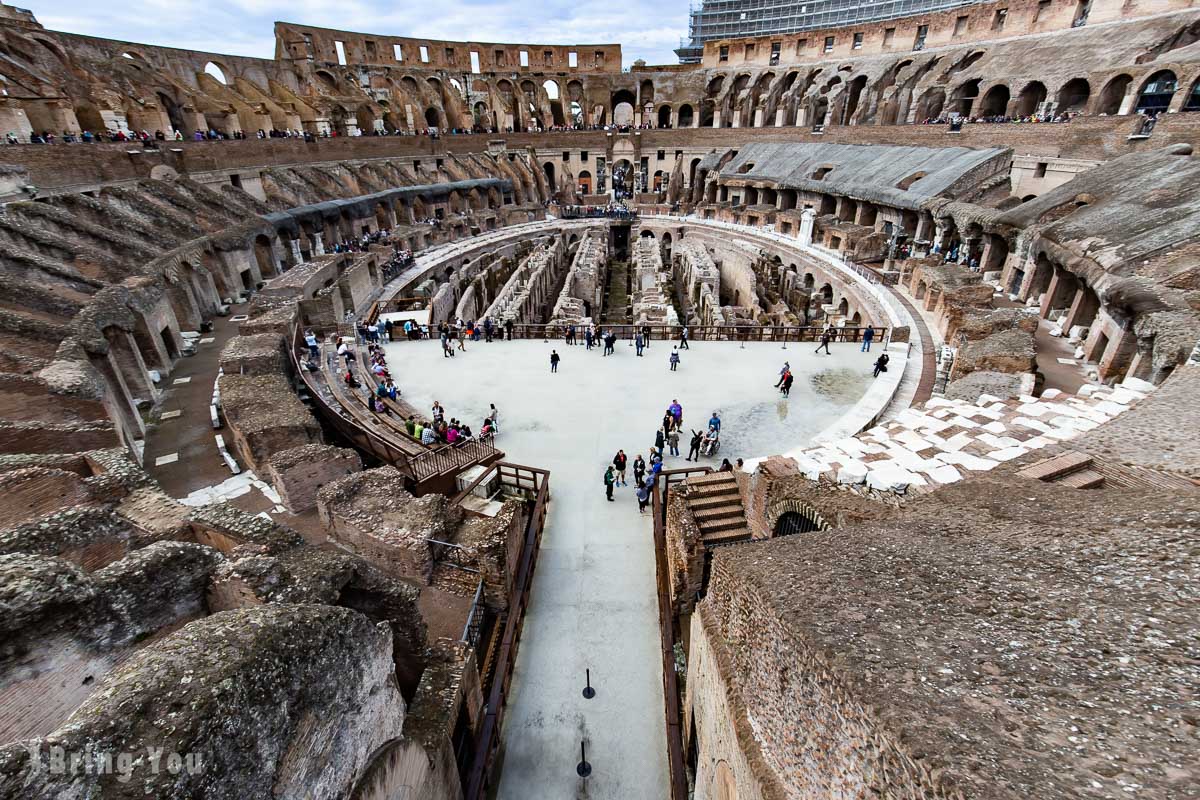
The Arch Of Constantine
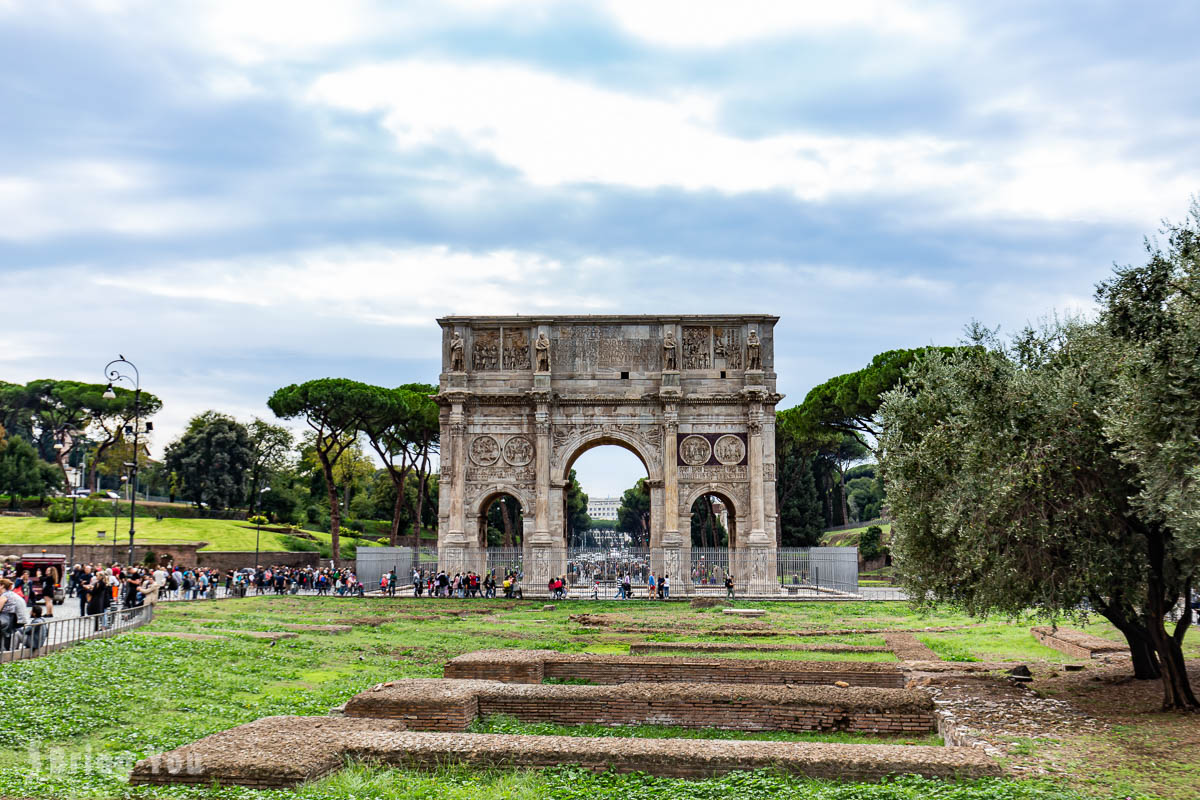
On the way out, don’t forget to take photos at the Arch of Constantine next to it. In AD 312, the arch was built to honor the victory of Constantine the Great (the first Christian Emperor of Rome) following his successful battle against Maxentius at the Battle of Milvian Bridge. The gate is found right next to a massive square called the Piazza del Colosseo.
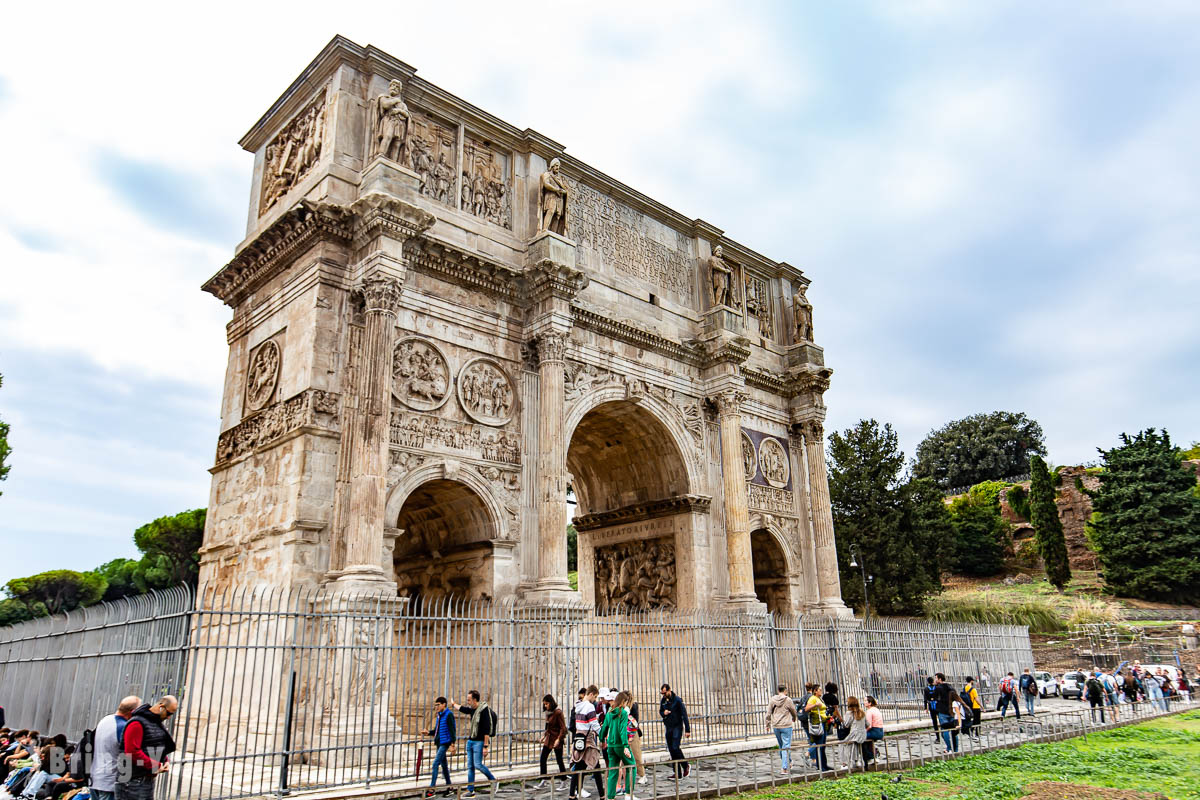
Final Words
The Colosseum, a masterpiece of history, architecture, and engineering, has stood the test of time after centuries of changes. To make the most of your trip, start with the Colosseum first thing in the morning, followed by the Roman Forum & Palatine Hill in the afternoon. Always double-check the latest updates on the official website if you set out on your own, but a guided tour is always a lifesaver for last-minute change or if you’re unsure of how to redeem the ticket and what to plan next. Despite the crowds, the experience is worthwhile.
